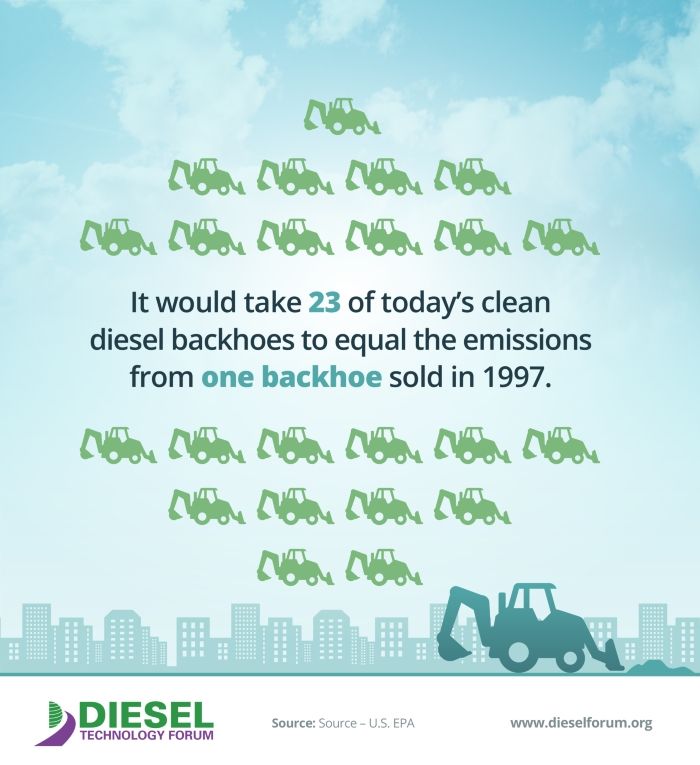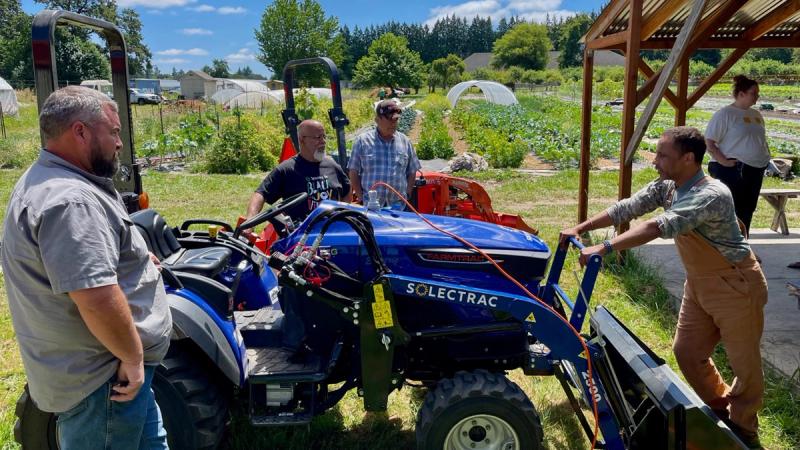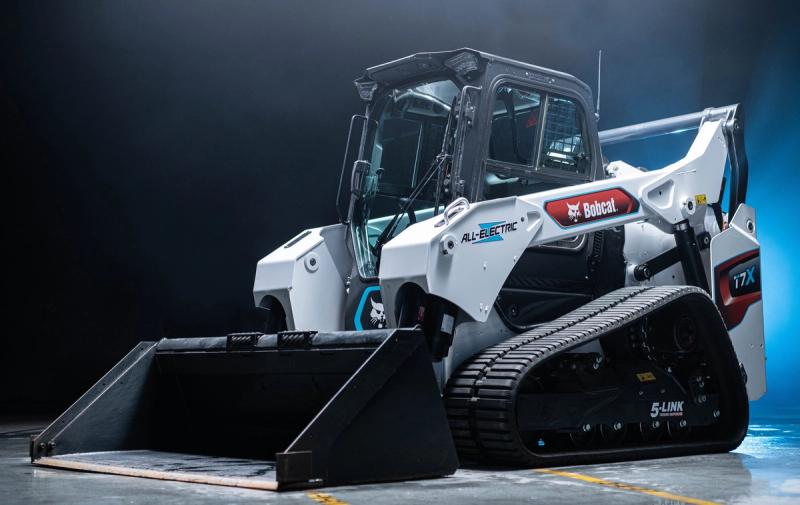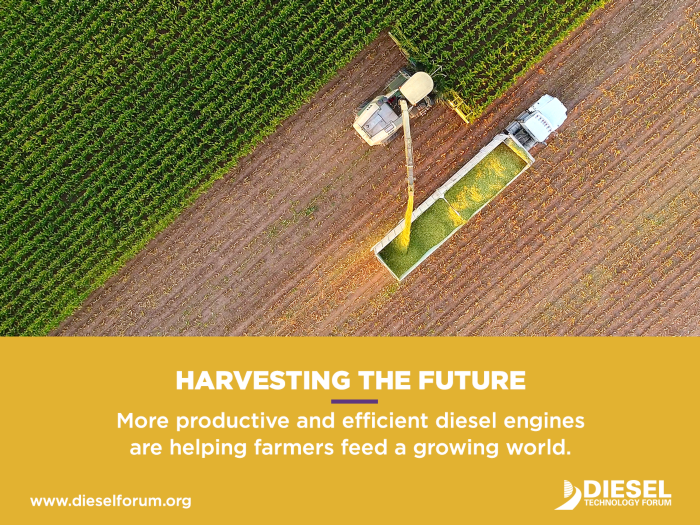The Death of Diesel


How far away is the non-diesel farm?
Farmer Ann has to move some bales out to her cattle, but notices her tractor is low on fuel. She pulls up to her tank next to the driveway and begins refilling.
What does she put in?
A) Diesel
B) Electricity
C) Propane
D) Methane
E) Hydrogen
No, there’s no one answer, but in not too many years, the ubiquitous diesel tanks found on America’s farms could be replaced by dispensers offering motive power from differing sources—and most of them much more planet-friendly than diesel.
Diesel won the war
Way, way back when—about the time your great grandfather started farming—stationary engines were powered by almost anything that would explode in a cylinder: gasoline, methanol, ethanol, naphtha, diesel, kerosene. Along came tractors to replace huge coal-fired steam equipment, and gasoline vied with diesel for supremacy for years.
Diesel won, primarily because of its ability to produce low-end “grunt” often needed to get heavy things moving on the farm. Gasoline-powered equipment was reserved for more homeowner-focused equipment, like mowers and utility tractors, that require less horsepower.
Since the 1920s, diesel fuel became the accepted standard of power in construction and farm equipment. Tier IV emissions controls have improved things, but...
Concerns over global warming have driven equipment manufacturers to look at alternative sources of power for farming equipment, even with Tier IV emission controls. So far they are starting small, but it's possible that our children will have to make choices.

Here’s what’s coming.
'Let’s electric'
That’s the headline from small tractor manufacturer Solectrac. The company launched a 70hp, 60 kWh electric tractor in 2021. Developed for heavy-duty farm and vineyard operations (the company is located in California’s Sonoma wine country), Solectrac’s two models “represent the very future of agriculture, the start of an electric tractor revolution,” said Roger M. Hoy, director of the Nebraska Tractor Test Laboratory.
Solectrac’s larger model, the e70N, is a narrow-frame tractor suitable for close vineyard work. It accepts Cat 1 and Cat 2 implements on the rear 3-point hitch, has a standard 540 rpm PTO, and lifts up to 2,000 pounds. In that regard, it is (use of “air quotes” here) a real tractor. And maybe more.
When you think about the way small tractors are used, certain specs seem ideal: Runtime of three to eight hours, depending on the load and task and double that with an expandable battery pack, overnight battery recharge of 8 to 10 hours, and a battery life estimated at 10 years of deep operating cycles. In other words, work hard all day, plug it in at night.

Electric tractors are ultra-quiet and emission-free.
Solectrac isn’t alone, however. Competitor Monarch Tractor offers a workhorse with similar specs, but adds an extra layer of “driver optional” autonomy for certain repetitive tasks.
John Deere recently announced its intention to produce smaller electric tractors and turf equipment by 2026. The company already offers an EV-power Gator UTV, that uses conventional lead-acid batteries .Deere is taking its time easing into the lithium-ion battery electric arena. Kubota and other manufacturers are gearing up for electric and non-diesel power plants, as well. Look for ZTRs and compact tractors with drop-in e-power at first, with ground-up designs on the way.
Heavier equipment like skid steer loaders are moving in this direction, as well. Bobcat has developed an E-powered track loader, and a mini excavator, too.

If you haven’t stopped into an auto dealer lately, what’s coming will surprise you. Pickup trucks are a huge profit center for manufacturers, and they are moving to EV power big time. Ford’s F-150 Lightning pickup truck released this year has been called “one of history’s most significant vehicles,” by respected automotive magazine Motor Trend.
GM will soon offer a Silverado EV. You might not be familiar is Rivian, built in Urbana, Ill., but their R1T pickup truck is getting rave reviews. Another unknown is Lordstown Motors, which is gearing up to build their Endurance pickup in Ohio, but that may be a couple years away.
So, “let’s electric” and get used to it. It’s coming.
It’s a gas
And that gas is methane, the second biggest man-made contributor to climate change after CO2. But methane is unique in that it is the only greenhouse gas that can power its own capture and reuse.
These pages have covered how farm waste products like manure have been successfully converted to biomethane for powering farm equipment, making it a renewable natural gas, called ��“circular farming.”
So far, New Holland Agriculture is the only manufacturer taking advantage of this, revealing their T6.180 Methane Power tractor a year ago. This 145 hp rated full size tractor produces the same levels of power and torque as its diesel equivalent.

But, New Holland says their tractor produces 98% less particulate matter, and reduces overall emissions by 80%. In short, its near-zero CO2 emission is definitely planet-friendly.
A related technology, propane-powered tractors have been developed, but never took off due to many factors, including cost and availability.
The holy grail-maker of fuels is a building block of the universe, hydrogen. Burning hydrogen to propel a vehicle had drawbacks—think of the airship Hindenburg disaster in 1937—but hydrogen internal combustion engines may be coming in another decade.
Hydrogen can be used in other ways, like to power an electric motor.
Hydrogen fuel cells separate out the hydrogen in a catalyst, and in doing so produce electricity, water, and heat. So the only thing released to the atmosphere is water. Honda, Toyota, and Hyundai have produced low volume hydrogen-powered automobiles. No farm equipment powered by hydrogen has been developed at this point, but Kubota announced it is working on it. Look for that around 2025.
What’s the holdup? In part, it has to do with where to buy the fuel. Virtually all U.S. hydrogen “gas stations” are in California, with most in urban areas.
Keep on keeping on
So, if all these technologies are in the pipeline, what will keep diesel alive? In a word, infrastructure.
You can’t just go down to the store and pick up a gallon of hydrogen or 5 gallons of methane to finish moving hay bales. Electricity is commonplace today, thanks to nearly a century of rural electrification efforts, but the cost of bringing EVs to market is high.
“As many electric vehicle operators are finding, there are significant infrastructure gaps, especially in more rural areas,” says Darren Parker, a vice-president of Massey Ferguson North America.
“There are alternatives, such as biodiesel, but again it comes down to infrastructure and availability. For compact equipment operators who rely on their local gas station and a 10-gallon gas can, access to advanced fuel alternatives is limited,” Parker notes.

Acreage owners and farmers have come to depend on diesel engines, which are stronger, cleaner and more efficient than ever. Manufacturers are working to provide sustainable alternatives on one hand, while advancing technology that improves the impact on the planet.
LEARN MORE:
Alternative farm power goes way back
https://americanhistory.si.edu/collections/search/object/nmah_687671
Ford's F-150 Lightning is Motor Trend's Truck of the Year
https://www.motortrend.com/news/ford-f-150-lightning-2023-truck-of-the-year/
Learn more about Solectrac
Tags:Features

Acreage Life is part of the Catalyst Communications Network publication family.
















